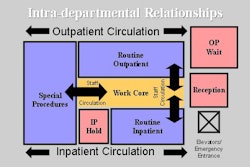
By Joseph Hawkins, CEO
Merritt, Hawkins & Associates
If there's one medical specialty where recruiting incentives and employment contracts are a moving target, it’s radiology. The demand for radiologists, which began to spike about four years ago, shows no sign of abating. If anything, demand is increasing due to factors ranging from the aging of the general population to innovations in imaging, physician training patterns, and the unique economics of healthcare.
As a result, the incentives being used to recruit and retain radiologists by hospitals, medical groups, and individual physicians are shifting as employers seek ways to remain competitive in a seller's market.
At our national physician search firm, for example, demand for the placement of radiologists has grown significantly in the past several years, from 42 in 1998 to 126 in 1999, 233 in 2000, and 252 in 2001. The numbers for 2002, having already surpassed last year's totals, are expected to show a 20%-30% increase for the year.
The rising demand coincides with a rise in the salaries and/or income guarantees being offered to radiologists. Once again using Merritt, Hawkins & Associates as an example, radiologists' base or guaranteed salary (not including signing bonuses or other perks) has risen 69% since 1998.
The average base salary or guaranteed salary among our searches was $197,000 in 1998, $225,000 in 1999, $271,000 in 2000, and $286,000 in 2001. As of late 2002, net income packages being offered to radiologists are commonly seen in the $300,000 to $350,000 range, while $400,000 packages are not all that unusual.
In comparison, the spring 2002 AuntMinnie.com SalaryScan survey lists an average base salary of $267,466 for all radiologists in the U.S. at all experience levels, with the highest salaries being earned in the southern and western states.
Still, salaries and guarantees are only part of the equation. The demand for radiologists is such that a competitive salary or guarantee offer is a given -- and the negotiating point in most radiologist searches usually revolves around other perks. Here are some of the perks and contractual arrangements we have seen more of in the past six to eight months.
Vacation. This has become a key area of negotiation as many radiologists seek to enhance their quality of life. It used to be assumed that a full-time equivalent (FTE) radiologist was good for 46 to 48 weeks a year, but that has declined to 40 to 44 weeks a year or lower. Few employers offer less than eight weeks of vacation, and 12 to 13 weeks is not uncommon. We have seen as much as 26 weeks offered.
CME. The standard $2,000 annual allowance is rising rapidly -- $8,000 to $10,000 is not uncommon.
Aggressive deferred compensation. Many groups are offering 403b plans or Keoghs to help radiologists shelter the high incomes they are earning.
Car allowance. Though not offered in the majority of radiology search assignments we represent, car allowances are being used to "sweeten the pot."
Signing bonuses. Signing bonuses are offered in about 35%-40% of the searches we conduct. The average signing bonus ranges from $14,000 to $15,000, though they may go as high as $25,000 or even $50,000.
Relocation. Relocation allowances are a standard perk in virtually all of the searches we conduct. Relocation allowances are generally in the $8,000 to $9,000 range.
Flexible scheduling. Probably the most innovative types of incentives involve flexible scheduling. Nighthawk shifts are available for radiologists who want to earn premium compensation for working what most physicians consider the least desirable hours. There are some radiologists, however, who for a variety of reasons prefer to have their days free, and embrace nighthawk shifts.
Market forces have given rise to another trend in scheduling that is still at the front of the curve. Because full-time radiologists now often work only 42 weeks a year or less, some facilities are experimenting with recruiting two radiologists to work 26-week shifts. These weeks can be scheduled consecutively, every other week or even every other day. The idea is that if one 40-week-a-year radiologist is going to cost $350,000 or more annually, why not bring in two who will cover the entire year for $100,000 more? This kind of arrangement may be ideal for semi-retired radiologists, or for those who are bi-coastal or have other reasons for needing half a year off.
Another emerging option relies on teleradiology, which allows physicians to read studies from a variety of facilities in the comfort of their homes.
Partnership. The old paradigm of two to three years of partnership is becoming rare today. One year is common, and some groups offer instant partnership. Goodwill buy-ins also are an outmoded concept in most cases. Today's buy-ins typically include a part of the equipment lease, and sometimes the buy-in amount is nominal or waived altogether.
The current recruiting market in radiology is without question one of the most intense and competitive that I have seen in over 20 years of conducting physician searches. Conditions will inevitably change at some point, but for now the competition for radiologists ensures that incentives will continue to operate on a sliding scale.
By Joseph HawkinsAuntMinnie.com contributing writer
December 12, 2002
Joseph Hawkins is CEO of Merritt, Hawkins & Associates (www.merritthawkins.com), a national physician search firm based in Dallas. He can be reached at [email protected].
Copyright © 2002 AuntMinnie.com



















